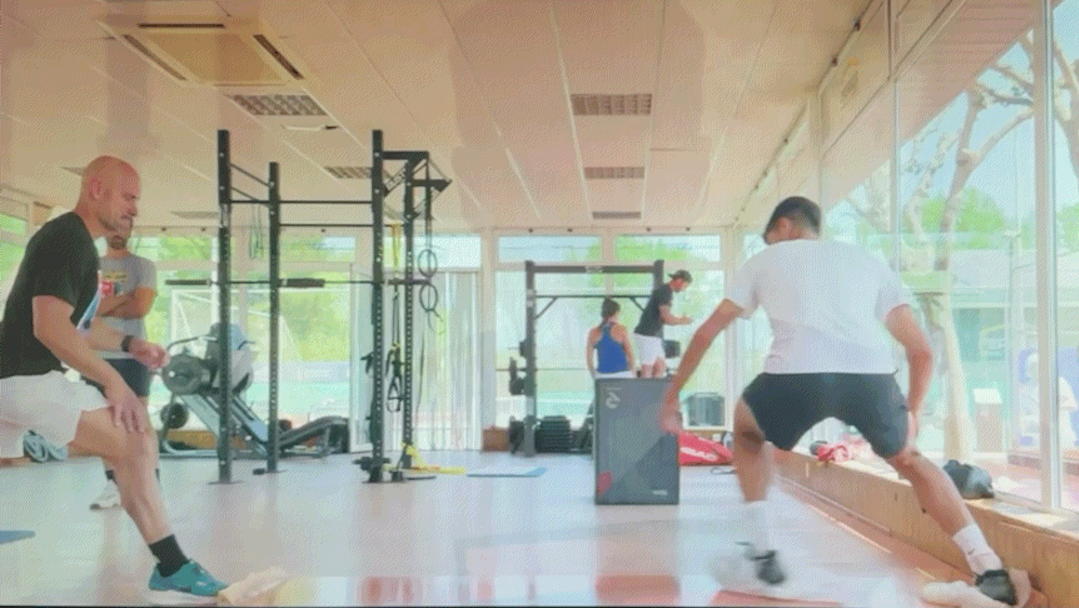It seemed to be the worst training technique yet to emerge from the new Netflix series Break Point. Shortly after the 31:30 mark in S1E2, Matteo Berrettini is seen heading into the training room following an epic 3rd round five-set win over Carlos Alcaraz at the Australian Open. I thought that he was heading to the stationary bike, but unfortunately, Berrettini was heading to a miniature pool for a cold water plunge.
In related news, I hate cold water. Consequently, I have skipped the cryotherapy craze in its entirety. If I am going to pay good money to freeze my ass off… there needs to be a lift ticket involved and water in the form of snow. Unfortunately, the appearance of a cold water plunge in Break Point made it feel compulsory for me to try this training technique. Ugh.
But first, the science. Tennis players use ice baths because it reduces inflammation and speeds up recovery after periods of intense physical exertion. It is said to work by constricting the blood vessels, which quickly open back up once you get out. In other words, the best part about this treatment is when you stop.
There is an increasing body of medical research that supports the benefits of the practice. A 2018 metanalysis study that examined the effectiveness of several recovery methods found that ice baths were the best for lowering inflammation. Cold water therapy also positively affects the central nervous system. That supports better sleep and a sense of well-being. Those are all extremely positive benefits for tennis players in the midst of high-level competition.
No thermometer was ever visible on the screen during Berrettini’s treatment session. However, a few ice cubes are floating around in the pool as he gets in. The research paper that I decided to use as a basis for my experimentation indicates that the temperature should be between 50-59 degrees Fahrenheit. Additionally, that same source recommends a treatment duration of 10-15 minutes.
Last Saturday afternoon, I played a USTA League singles match on a hot and muggy day against a player that was less than half my age. The score looked lop-sided in my favor, but my opponent had great court coverage, forcing me to hit 2-3 additional shots on almost every point. It was probably my most taxing match since the National Clays in March. As I drove home, I realized that there was probably no better time than the present to take the plunge.
The internet tells me that the cheapskate way to DIY the treatment at home is to fill a bathtub halfway with cold water and add three 5-pound bags of ice. Naturally, the store where I purchased mine only carries 7-pound bags. 14 pounds is probably close enough. I was kind of shooting for the upper end of the recommended temperature range anyway.
I had previously purchased a floating pool thermometer for testing the waters if you will. Unfortunately, after pouring the ice into the tub, I realized I had left the thermometer at my Mom’s house. Nevertheless, I was committed and proceeded on faith.
The initial moments were brutal, but with considerably less swearing than I had anticipated. I unambitiously told Siri to set a timer for 10 minutes and concentrated on my breathing. My thoughts drifted to if (and how much) peeing in the water might increase the temperature. After what I felt was an eternity, I checked the time. I was only two and a half minutes in.
In Break Point, Berrettini is shown FaceTiming with his family during the treatment. I decided to take a page out of his book and called the Trophy Husband. The ensuing conversation was enough of a distraction that the rest of the time seemed to pass more quickly. I would estimate that I stayed in the water a couple more minutes after the timer lapsed.
The treatment session wasn’t as hard as I had expected it to be. The initial moments were brutal, but my body quickly adjusted. Approximately 30 minutes after toweling off, I experienced a sense of well-being. While I would stop short of the “euphoria” word that I have seen others use to describe this training technique’s results, I felt much better than usual following a singles match.
Ordinarily, I would think that the idea that I need to incorporate cold water therapy into my routine is terrible news. However, the overwhelming sense of well-being that resulted eclipsed the dread of those initial moments easing into the water.
For me, cold-water therapy is likely here to stay.
 | Floating Pool Thermometer (This is the actual model I purchased. The company also makes an alligator one which throws off a LaCoste vibe.) |
- An Evidence-Based Approach for Choosing Post-exercise Recovery Techniques to Reduce Markers of Muscle Damage, Soreness, Fatigue, and Inflammation: A Systematic Review With Meta-Analysis, Olivier Dupey et al, Frontiers in Phisiology, April 26, 2018.




A good account which mirrors my experience exactly…. except my enthusiastic wife insisted on ice-cubes only… so water only appeared as the cubes melted. I had played five three set matches in five days.
10 minutes was enough for me… but I did feel better. I used the ice-bath after each match and recovery was definitely quicker.
I haven’t used the process regularly, though…. The thought of getting into the ice cubes is quite a deterrent!